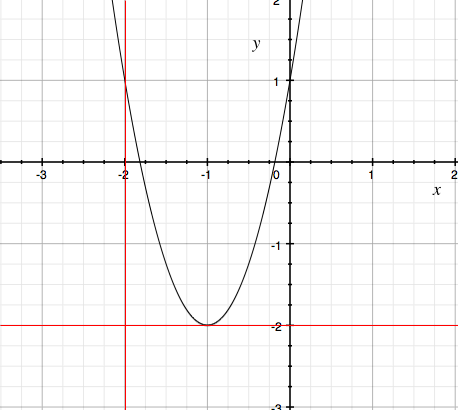| |||
| Math Central | Quandaries & Queries |
|
Question from Sean, a student: the information is thus: My question is: Would my answer be s simple as f(x)=3(x-1)^2 or is it a more complicated answer which will get me lost? |
Hi Sean,
You are asked to translate up 2 units and to the right 2 units. You can do this by moving the X-axis down 2 units and the Y-axis to the let 2 units. Below is the graph of the function $y = 3(x + 1)^2 - 2$ with the axes in black. The instructions are to move the axes to the red lines.

The shape of the graph hasn't changed, all that has changed is that a point on the graph of $y = 3(x + 1)^2 - 2$ has its X-coordinate and Y-coordinate each increased by 2 relative to the new axes. The equation of the graph relative to the new coordinates is $y = 3(x - 1)^2$
Penny
 |
||
Math Central is supported by the University of Regina and The Pacific Institute for the Mathematical Sciences.